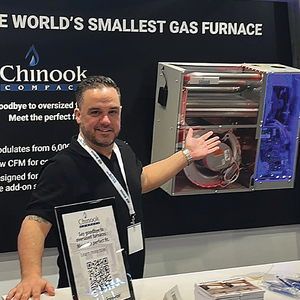Q:
When building a supertight house, how do you allow for makeup air for venting appliances?
Scott Broce, Newberg, OR
A:
Jamie Lyons, a mechanical and environmental engineer, responds: In all but the tightest of homes, normal bathfan cycles don’t create problems. Air enters the house through joints and other openings in the building envelope to make up for the air that has been exhausted. We’ve field-tested bath fans in a very tight home with and without a makeup-air damper engaged. When the makeup air through the damper was cut off, the bath exhaustfan flow dropped by a couple of cubic feet per minute (cfm)— not a significant amount.
Range hoods are another matter, particularly those with higher cfm ratings. You now can buy dampers that open to allow passive makeup air whenever the range hood operates. Some receive signals over the home’s electrical wiring to open when the range hood turns on, avoiding the need for additional controls or wiring. These dampers typically are ducted to introduce fresh air in the vicinity of the range hood with independent ducts or through the home’s central duct system. This is key for hoods over 400 cfm, and the 2009 IRC now has a provision requiring makeup air for hoods at or above this capacity. It’s important to size passive systems accurately so that there’s enough opening area to allow adequate makeup air into the home.
A fan-powered system that blows makeup air directly into the home via ductwork is another option. Such systems are wired with current switches or other controls so that they operate simultaneously with the range hood. Depending on climate severity, conditioning or tempering makeup air also may be part of a makeup-air system.
As building codes and practices favor tighter houses, providing makeup air for dryer exhaust will become more important. An average dryer draws about 150 cfm to 200 cfm from the surrounding air, but dryer exhaust has never really been a widespread issue because homes have been leaky enough. In the future, such systems could require makeup-air solutions, especially if they could interfere with the operation of combustion appliances.
























